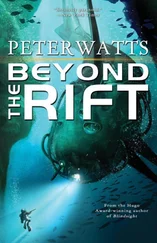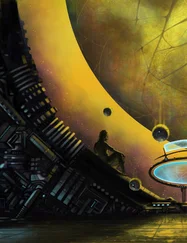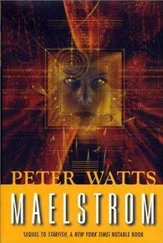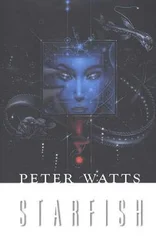V. N. Tsytovich, “From Plasma Crystals and Helical Structures Towards Inorganic Living Matter,” New Journal of Physics 9, no. 8 (August 1, 2007): 263.
Ara Norenzayan and Azim F. Shariff, “The Origin and Evolution of Religious Prosociality,” Science 322, no. 5898 (October 3, 2008): 58–62, doi:10.1126/science.1158757.
Richard Sosis and Candace Alcorta, “Signaling, Solidarity, and the Sacred: The Evolution of Religious Behavior,” Evolutionary Anthropology: Issues, News, and Reviews 12, no. 6 (2003): 264–274, doi:10.1002/evan.10120.
Jesse M. Bering, “The Folk Psychology of Souls,” Behavioral and Brain Sciences 29, no. 5 (2006): 453–462, doi:10.1017/S0140525X06009101.
Azim F. Shariff and Ara Norenzayan, “God Is Watching You: Priming God Concepts Increases Prosocial Behavior in an Anonymous Economic Game,” Psychological Science 18, no. 9 (September 1, 2007): 803–809, doi:10.1111/j.1467-9280.2007.01983.x.
Melissa Bateson, Daniel Nettle, and Gilbert Roberts, “Cues of Being Watched Enhance Cooperation in a Real-World Setting,” Biology Letters 2, no. 3 (September 22, 2006): 412–414, doi:10.1098/rsbl.2006.0509.
Azim F. Shariff and Ara Norenzayan, “Mean Gods Make Good People: Different Views of God Predict Cheating Behavior,” International Journal for the Psychology of Religion 21, no. 2 (2011): 85–96, doi:10.1080/10508619.2011.556990.
Jeffrey P. Schloss and Michael J. Murray, “Evolutionary Accounts of Belief in Supernatural Punishment: A Critical Review,” Religion, Brain & Behavior 1, no. 1 (2011): 46–99, doi:10.1080/2153599X.2011.558707.
…to name but a few.
Eckart Voland and Wulf Schiefenhovel, eds., The Biological Evolution of Religious Mind and Behavior , 2009, http://www.springer.com/life+sciences/evolutionary+%26+developmental+biology/book/978-3-642-00127-7.
Justin L. Barrett, “The God Issue: We Are All Born Believers,” New Scientist 213, no. 2856 (March 17, 2012): 38–41, doi:10.1016/S02624079(12)60704-0.
Paul Bloom, “Is God an Accident?,” The Atlantic , December 2005, http://www.theatlantic.com/magazine/archive/2005/12/is-god-an-accident/304425/?single_page=true.
Elizabeth Culotta, “On the Origin of Religion,” Science 326, no. 5954 (November 6, 2009): 784–787, doi:10.1126/science.326_784.
Dr. Robert Sapolsky’s Lecture About Biological Underpinnings of Religiosity , 2011, http://www.youtube.com/watch?v=4WwAQqWUkpI&feature=youtube_gdata_player.
Sam Harris et al., “The Neural Correlates of Religious and Nonreligious Belief,” PLoS ONE 4, no. 10 (October 1, 2009): e7272, doi:10.1371/journal.pone.0007272.
Lorenza S. Colzato, Wery P. M. van den Wildenberg, and Bernhard Hommel, “Losing the Big Picture: How Religion May Control Visual Attention,” PLoS ONE 3, no. 11 (November 12, 2008): e3679, doi:10.1371/journal.pone.0003679.
Sara W Lazar et al., “Meditation Experience Is Associated with Increased Cortical Thickness,” Neuroreport 16, no. 17 (November 28, 2005): 1893–1897.
Laura Saslow, “My Brother’s Keeper?: Compassion Predicts Generosity More Among Less Religious Individuals,” Social Psychological and Personality Science 4, no. 1 (January 1, 2013): 31–38.
Graham Lawton, “The God Issue: Religion for Atheists,” New Scientist 213, no. 2856 (March 17, 2012): 48–49, doi:10.1016/S0262-4079(12)60708-8.
Michael Inzlicht, Alexa M. Tullett, and Marie Good, “The Need to Believe: a Neuroscience Account of Religion as a Motivated Process,” Religion, Brain & Behavior 1, no. 3 (2011): 192–212, doi:10.1080/2153599X.2011.647849.
George Ellis, “Cosmology: Patchy Solutions,” Nature 452, no. 7184 (March 13, 2008): 158–161, doi:10.1038/452158a.
Julian Jaynes, The Origin of Consciousness in the Breakdown of the Bicameral Mind (Boston: Houghton Mifflin Company, 1976).
Michael S. Gazzaniga, “The Split Brain Revisited,” Scientific American Special Edition 12, no. 1 (August 2, 2002): 27–31.
Jennifer A. Whitson and Adam D. Galinsky, “Lacking Control Increases Illusory Pattern Perception,” Science 322, no. 5898 (October 3, 2008): 115–117, doi:10.1126/science.1159845.
Helen Thomson, “Mindscapes: Stroke Turned Ex-Con into Rhyming Painter” New Scientist , May 10, 2013, http://www.newscientist.com/article/dn23523-mindscapes-stroke-turned-excon-into-rhyming-painter.html.
Sandra Blakeslee, “A Disease That Allowed Torrents of Creativity,” New York Times , April 8, 2008, sec. Health, http://www.nytimes.com/2008/04/08/health/08brai.html.
Emma Ashwin et al., “Eagle-Eyed Visual Acuity: An Experimental Investigation of Enhanced Perception in Autism,” Biological Psychiatry 65, no. 1 (January 1, 2009): 17–21, doi:10.1016/j.biopsych.2008.06.012.
Danai Dima et al., “Understanding Why Patients with Schizophrenia Do Not Perceive the Hollow-Mask Illusion Using Dynamic Causal Modelling,” NeuroImage 46, no. 4 (July 15, 2009): 1180–1186, doi:10.1016/j.neuroimage.2009.03.033.
Heather Mann et al., “Time-Space Synaesthesia–A Cognitive Advantage?,” Consciousness and Cognition 18, no. 3 (September 2009): 619–627, doi:10.1016/j.concog.2009.06.005.
Victoria Gill, “Can You See Time?,” BBC , September 11, 2009, sec. Science & Environment, http://news.bbc.co.uk/2/hi/science/nature/8248589.stm.
Michael Koenigs et al., “Damage to the Prefrontal Cortex Increases Utilitarian Moral Judgements,” Nature 446, no. 7138 (April 19, 2007): 908–911, doi:10.1038/nature05631.
Deheng Wang et al., “Genetic Enhancement of Memory and Long-Term Potentiation but Not CA1 Long-Term Depression in NR2B Transgenic Rats,” PLoS ONE 4, no. 10 (October 19, 2009): e7486, doi:10.1371/journal.pone.0007486.
Ronny Stahl et al., “Trnp1 Regulates Expansion and Folding of the Mammalian Cerebral Cortex by Control of Radial Glial Fate,” Cell 153, no. 3 (April 25, 2013): 535–549, doi:10.1016/j.cell.2013.03.027.
Robert M. Hoffman, “The Multiple Uses of Fluorescent Proteins to Visualize Cancer in Vivo,” Nature Reviews Cancer 5, no. 10 (October 2005): 796–806, doi:10.1038/nrc1717.
Anonymous, “Autism: Making the Connection,” The Economist , August 5, 2004, http://www.economist.com/node/3061282.
Fabienne Samson et al., “Enhanced Visual Functioning in Autism: An ALE Meta-Analysis,” Human Brain Mapping 33, no. 7 (2012): 1553–1581, doi:10.1002/hbm.21307.
Читать дальше








